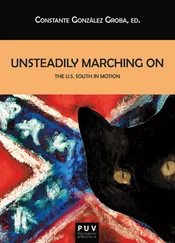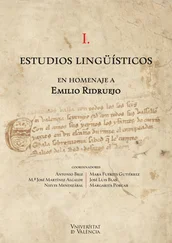14 I am referring here to Bill Ashcroft, Gareth Griffiths and Helen Tiffin’s 1989 classic The Empire Writes Back: Theory and Practice in Post-Colonial Literature.
15 Joseph Cimakasky explains that “ἐξ admits of multiple meanings depending upon usage, but the most general sense of the word is from out of or away from a thing” (9).
16 The most comprehensive book-length studies of Southern-Caribbean connections include: Deborah N. Cohn’s History and Memory in the Two Souths: Recent Southern and Spanish American Fiction (1999), John Lowe’s Calypso Magnolia , George Handley’s Postslavery Literature in the Americas: Family Portraits in Black and White (2000), Elizabeth Christine Russ’ The Plantation in the Postslavery Imagination (2009), and Keith Cartwright Sacral Grooves, Limbo Gateways: Travels in Deep Southern Time, Circum-Caribbean Space, Afro-creole Authority (2013).
17 Interestingly enough, Barbara Ladd questions whether regionalism and a sense of place are interrelated or contradictory terms: “Is a literature ‘grounded in place’ necessarily a ‘regional’ literature?” (“Dismantling the Monolith” 28). To support her query Ladd quotes from Eudora Welty who said, “‘Regional’ is an outsider’s term [that] … has no meaning for the insider who is doing the writing, because as far as he knows he is simply writing about life” (qtd in Ladd, “Dismantling the Monolith” 28). The perspective of the exteriority informs “region,” while “‘place’ and ‘location are subjective, experiential, insiders’ terms” (Ladd, “Dismantling the Monolith” 28).
18 Literature perpetuates the South through evocations of “a sense of place,” as Barbara Ladd observes, “both the past (memory) and the future (invention) are evoked in terms of places - and it is hard to imagine that memory could withstand the destruction of place, or that the future could be imagined except as a place (in both time and space)” (“Dismantling the Monolith” 30).
PART I
TRANSNATIONAL SOUTH: THE CARIBBEAN CONNECTION
Imagining the South Through the Caribbean:
Spatial Narratives of Liberty
in the Novels of Holcombe and Livermore
Deniz Bozkurt-Pekar Leipzig University, Germany
The notion that the US South, especially its most southern and coastal regions, including Florida, Louisiana, and Texas, function as a cultural extension of the Caribbean is no longer an innovative position in academia. Not only scholars of American and Southern Studies, like Vera Kutzinski (“in cultural terms, the southernmost parts of the United States are really rimlands of the Caribbean” (Kutzinski 61)) and John Wharton Lowe (“the U.S. South ... is in many ways the northern rim of the Caribbean”), acknowledge a socio-geographical and cultural link between the South and the Caribbean. Other fields including sociology, history, and political science also contribute to this established notion. As Lowe notes, Immanuel Wallerstein, too, in his seminal work on the historical developments of modern global capitalism identifies an “‘extended Caribbean’ and maps an area reaching from Brazil to Maryland, recognizing the transnational spread of the plantation economy that gripped the New World from its inception well into the twentieth century.”
The historical connection between the Caribbean and the US South has been illuminated in the comprehensive academic production on the “extended Caribbean:” the slave economy in the Americas not only created tightly-knit plantation communities within which the US American slaveholders – including those outside the South who had an economic interest in slave labor – gained “hemispheric identities” (Guterl 183) and carried on their enterprises – including the illegal slave trade – in the most profitable location in the slaveholding New World. We also know through works like Stephen Chambers’ No God But Gain that the US political machine made this geographical fluidity possible for the slave economy. Threatened by the abolitionist waves surrounding them, the US southern slaveholders turned their eyes to the Caribbean, as well as Central and South America where slavery continued in certain locations like Brazil and Cuba. These places functioned both as possible refuge to rebuild their slave-economy-oriented life styles in case of abolition in the US, and as a part of their expansionist dreams to keep slavery intact in the union. The Caribbean had negative connotations for the southern planter, as well. Wherever the hemispheric ties of the slave economy extended, there were also abolitionist and black cultures to be found. While the Haitian Revolution and other slave revolts in the archipelago, and in the continent, spread fear in the hearts of those engaged in the slave economy, abolitionist authors like William Wells Brown (“St. Domingo”) and Martin R. Delany ( Blake ) capitalized on this fear that is most famously known from Sansay’s The Horrors of St. Domingo .
The Civil War and the Emancipation Proclamation erased neither the abovementioned connotations nor the ties that the South established with the Caribbean; quite to the contrary, these relations have constituted the roots of intertwined histories and cultures in these regions that have reached to our day. Thus, it is no longer debatable that a comprehensive study of the US American South, be it in the humanities or social sciences, calls for an inspection of a much larger area. The literature of the South, as well as the literature about it, justifies this analytical need. It is hardly possible to encounter a southern text that stands alone without any reference to its archipelagic neighbors, and other surrounding domestic or foreign regions. Moreover, finding just two southern texts that present common imageries of the region proves to be a challenge, justifying Douglas Reichert Powell’s critical regionalist arguments regarding the “rhetorical and poetic construction” of regions (6). In effect, Greeson writes, “[the] South that we hold collectively in our minds is not – could not possibly be – a fixed or real place. It both exceeds and flattens place; it is a term of the imagination, a site of national fantasy” (1). Still, however “collectively” we may hold an image in our minds, identifying the agent of image construction, the imaginer, or who we are, helps us discover why our individual conceptualizations of a region, in this case of the South, are not necessarily as analogous as one may assume. As Powell writes: “It matters, too, not only how a map is drawn, but who is drawing it and why” (6). The assumed collective image of the South today, which Greeson herself also deconstructs, is likewise one that is drawn . Among the echoing rumbles of UNC’s well-known Silent Sam that simultaneously reinforces and condemns the image of the South as “the internal other” within the US (Greeson 1), it is important to once again raise Powell’s questions here: who has drawn this image of the South as we understand it today, and why? And, equally significantly, whose spatial imaginations of the region does our collective image serve to obfuscate?
The pursuit of answers to these questions in antebellum texts may at first glance seem ludicrous. However, the roots of the most obstinate markers through which the South is identified today indeed lay in the events, discussions, and ideas that characterized the antebellum US. The nationwide tension between expansionism and nation-building processes coupled with relatively more southern-specific contentions such as the extension of slavery to newly acquired territories in addition to the overall discussions on the continuance of slavery in the Union and its neighbors present the antebellum era as one that is abundant with a literature that offers “a history of possible futures” (Hutchison 62). That is, the image of the South today which is frequently reduced to “an exceptional and racist ‘Other’” (Burton 8) helps to hide the co-existence of multiple Souths that has characterized the region for different actors, in other words, to mask the maps of the South drawn by those whose voices are lost in canonical metanarratives about the region.
Читать дальше












